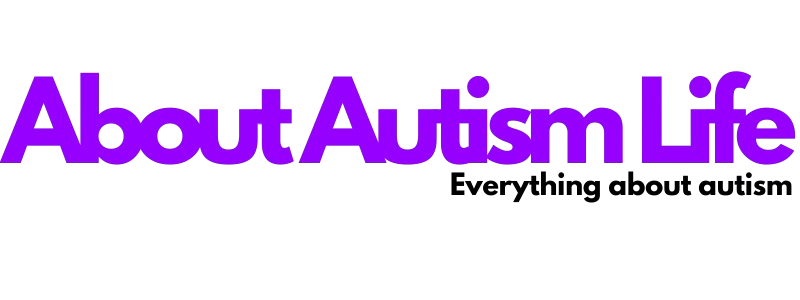It is now widely accepted that the disorders included in the Autism spectrum (“Diffuse Developmental Disorders”) in current international classification systems are neuropsychiatric conditions that show a wide range of expression and result from multifactorial developmental disorders.
Diffuse developmental disorders are more common in the pediatric population than some of the more widely known disorders such as diabetes or Down syndrome. Epidemiological studies show that the incidence ranges between 2 and 6 per 1,000 children. They can be diagnosed from the age of 3 years, and in some cases even from the age of 18 months. The appearance of any symptom of developmental disorders is a reason for the child to be evaluated by a qualified professional in developmental disorders. Diffuse Developmental Disorders are characterized by severe and extensive developmental problems, affecting various areas of development. Thus, the person with some of these disorders may have a markedly reduced ability to interact socially, emotionally, or communicate, to display stereotyped behavior and stereotyped interests.
In some cases, the baby looks ‘different’ from birth, does not respond to people or focuses on an object for a long time, and in most cases the development is not normal. When an infant suddenly becomes silent, withdraws, self-injures, or is indifferent to others, it all signals a problem. Research has shown that parents are usually right when they observe developmental problems, although they may not realize the exact nature or extent of the problem.
Autism
Autism is a serious neuropsychiatric disorder that lasts a lifetime and is usually present from birth. In the context of this disorder, the development of certain psychological skills, which are vital for the psycho-social function and adequacy of man, is hindered or difficult. These skills are related to social transaction and reciprocity, communication, and the organization of appropriate and purposeful activity. In these areas, autistic people show significant difficulties and characteristic deviations.
In the context of the disorder, there is variety in the form of symptoms, the combination of difficulties and the degree of severity. Therefore, autistic people, on the one hand, differ significantly from the normal, while on the other hand, they also differ from each other.
In most cases, there is some degree of mental retardation. In a relatively small percentage – about 20% – intelligence is maintained at or near normal. Autism and mental retardation often coexist, but the two conditions are not identical. After all, autistic individuals who retain perceptual and mental abilities, again show the characteristic cognitive, psychological and behavioral differences.
How common is Autism?
It should be noted that in recent years the epidemiological data of autism and its related conditions have changed considerably. With the recognition of a variety of forms, several cases are now included in the “autistic spectrum” disorders. It occurs much more often in boys, in a ratio of 3-4 boys to 1 girl. It does not discriminate on the basis of race, culture or social class. From 4-5 per 10,000 children given in previous studies, the frequency is now estimated by some researchers at 16.8 / 10,000, while the percentage of other diffuse developmental disorders corresponds to 45.8 / 10,000. Although this frequency can not be considered definitive, because there are different methodologies in different studies, it shows that these situations are not so rare. Based on these data, it is estimated that in Greece there must be at least 4,000 to 5,000 children and adults with classic Autism and 20,000 to 30,000 with autistic-type developmental disorders. At the World Autism Organization World Congress in Melbourne, Australia in 2002, the announcement was 1: 500.
What are the characteristics of autism?
Serious slowdown in language development and communication:
Language evolves very slowly and sometimes does not develop at all. If it eventually develops, linguistic expression usually takes on paradoxical forms or unusual use of words without any connection to their normal meaning. Even those who can use language to communicate can use unusual similes or speak in a formal, monotonous voice.
What are the characteristics of autism?
Serious slowdown in language development and communication:
Language evolves very slowly and sometimes does not develop at all. If it eventually develops, linguistic expression usually takes on paradoxical forms or unusual use of words without any connection to their normal meaning. Even those who can use language to communicate can use unusual similes or speak in a formal, monotonous voice.
Serious slowdown in understanding social relationships:
The autistic child often avoids looking the other in the eye, does not want to be hugged and seems to be cut off from the world around him. He does not seem to want or know how to play with other children. His ability to make friends is problematic and he is unable to understand other people’s feelings and opinions.
Inconsistent forms of sensory reactions:
The autistic child may at times give the impression that he is deaf and that he can not react to words and other sounds. Other times, the same child may be overly annoyed by a daily noise, such as the noise of a vacuum cleaner, the barking of a dog, or the crying of a baby. The child may experience an anesthesia in pain and a lack of response to cold or heat or an overreaction to other sensory stimuli.
Heterogeneous forms of mental functions:
An autistic person may have special abilities in certain areas. It can have maximum capacity in some specific functions, in relation to its general level of operation (eg painting, music, mathematical calculations, memorizing events). About 20% -30% of autistic people have average or above average intelligence. On the other hand, the majority of children (70% -80%) have varying degrees of mental retardation. This combination of mental disabilities and abilities makes Autism particularly complex.
Explicit restrictions on activities and interests:
A person suffering from Autism may exhibit repetitive body movements, such as clapping, spinning, or shaking the torso. Some people with autism may talk about the same thing over and over again. The person is also likely to need to follow the same routine or the same program every day during their various activities. If habits change, the child or adult becomes very upset and the upset often causes severely disruptive behaviors such as outbursts of anger. In the most severe cases, a person with Autism can exhibit self-destructive behavior. This is due to an inability to understand and communicate.
What is the most common problem in Autism?
People with autism have great difficulty learning language and social skills and relating to other people.
How does Autism affect behavior?
In addition to serious problems with language and social relationships, people with Autism often experience tremendous hyperactivity or unusual passivity in their daily activities, as well as in their relationships with their parents, family members, and others.
Behavioral problems range from very serious to very mild. Serious behavioral problems manifest themselves in the form of very unusual, aggressive, and, in some cases, even self-destructive behavior. These behaviors can be persistent and very difficult to change.
In its mildest form, Autism looks like a learning disability. Often, however, even people with mild autism have significant disabilities in their daily lives due to their lack of communication and social relationships.
Is Autism Combined With Other Disabilities?
Autism can exist alone or in combination with other developmental disorders, such as mental retardation, learning disabilities, epilepsy, deafness, blindness, etc. Cases of Autism occur in a continuous range from mild to very severe. Some people may have much more severe autistic behavior, while others with Autism may have milder forms.
What is the difference between Autism and Mental Retardation?
Most children with Mental Retardation develop skills at a homogeneous rate of learning, although it is slower than that of children of the same age. People with autism show exclusively heterogeneous development of abilities. They tend to have shortcomings in certain areas, with a more common ability to communicate and connect with others, and often develop much greater skills in other areas. It is important to distinguish Autism from Mental Retardation or other disorders. Misdiagnosis will lead to incorrect treatment and education.
Can people with autism be helped?
Yes, Autism Can Be Treated. Studies show that all people with autism can be significantly improved with appropriate treatment and education. Many people with autism eventually show a greater response to others as they learn to understand the world around them.
How can people with Autism learn better?
Through specially trained teachers, in strictly structured programs that emphasize individual guidance. People with autism can learn to function at home and in the community. Some can learn to live an almost normal life.
What types of occupations can people with autism do?
In general, people with autism perform best in strictly structured occupations that involve a degree of repetition. They usually perform better in solitary jobs than in jobs that require a lot of cooperation with other people.
Some people with Autism work as artists, pianists, painters, farmers, office workers, computer operators, washers, factory kitchen workers, factory assembly workers, library assistants, or factory workers as returnees. other special professional programs.
What other activities do people with Autism enjoy?
People with autism often enjoy the same recreational activities as people without a disability. They often enjoy music, swimming, hiking, singing, horseback riding, and other activities.
Often people with autism may have a particular interest in an activity in which they have become “experts”, topics for specific interests may be the weather report, bus routes, geography, car brands, sports news, etc. .λπ. For other people, these interests may be things that irritate their senses, such as watching water run and get lost in the sewer, flipping through the pages of a book, waving a piece of wire, rubbing their hands in specific fabrics, etc.
Can people with autism work?
Yes. In communities that provide education during the school years and then with specially trained “professional mentors”, people with Autism acquire skills that enable them to work successfully. Some may work in standard positions in the community, while others may be successful in specially protected professional programs for people with disabilities.
However, in societies that do not provide special education and training for people with autism, most people with autism will not be able to work as adults.
Asperger syndrome
Asperger syndrome is the term used to describe the milder and more functional form of the so-called spectrum of diffuse developmental disorders, or autism spectrum. Like all conditions on the autistic spectrum, Asperger’s syndrome represents a neurological developmental disorder of unknown etiology that presents with abnormalities or abnormalities in three major areas of development: social interaction and social skills, the use of language for communication purposes, and certain behavioral characteristics that include repetitive events and a limited but intense range of interests (Bauer, 1996).



